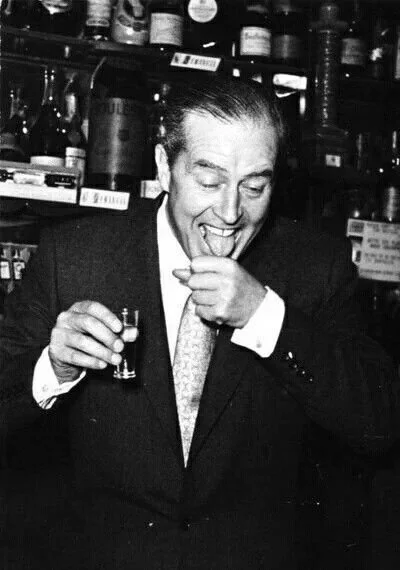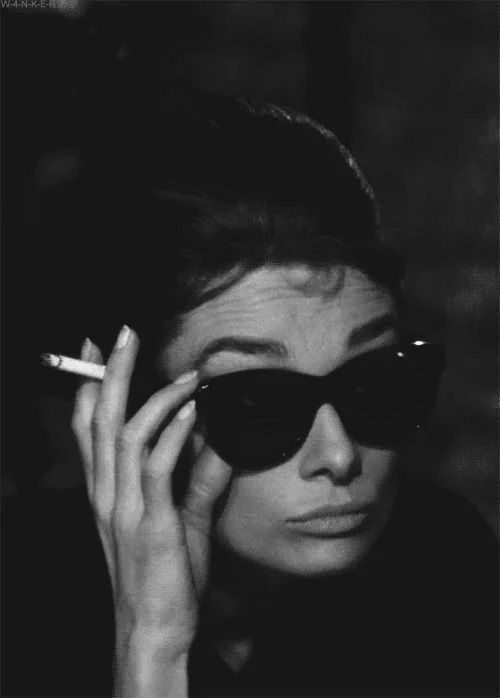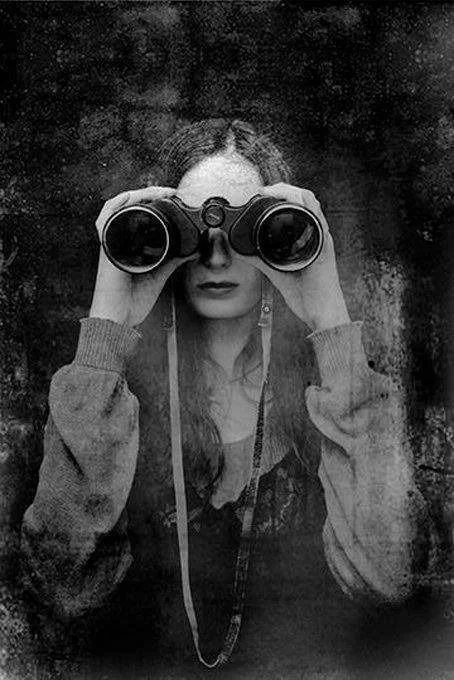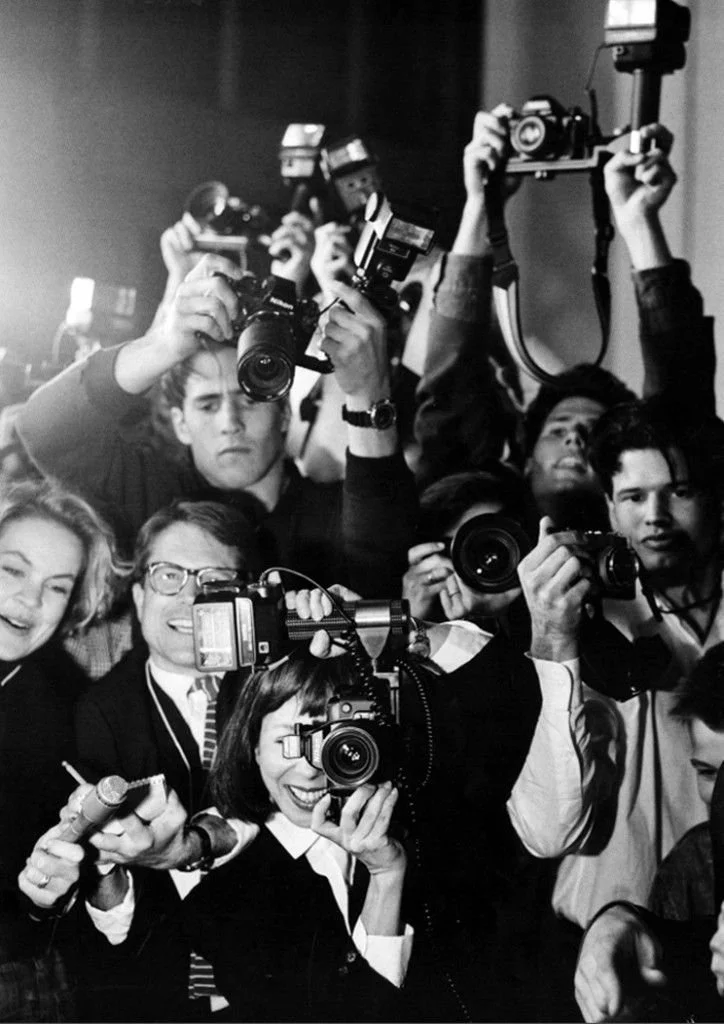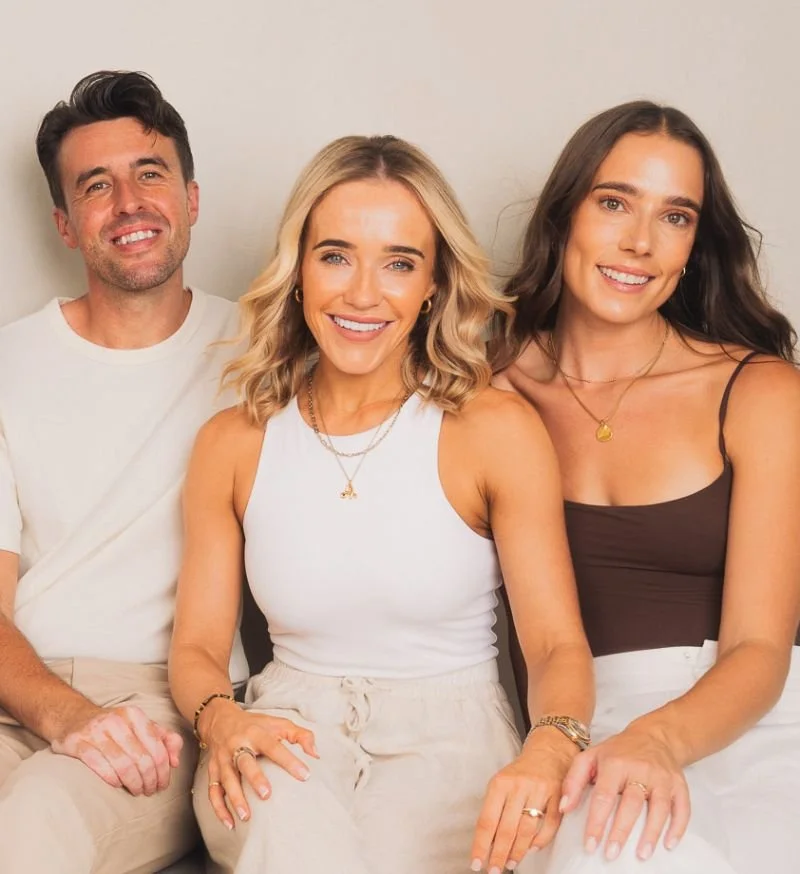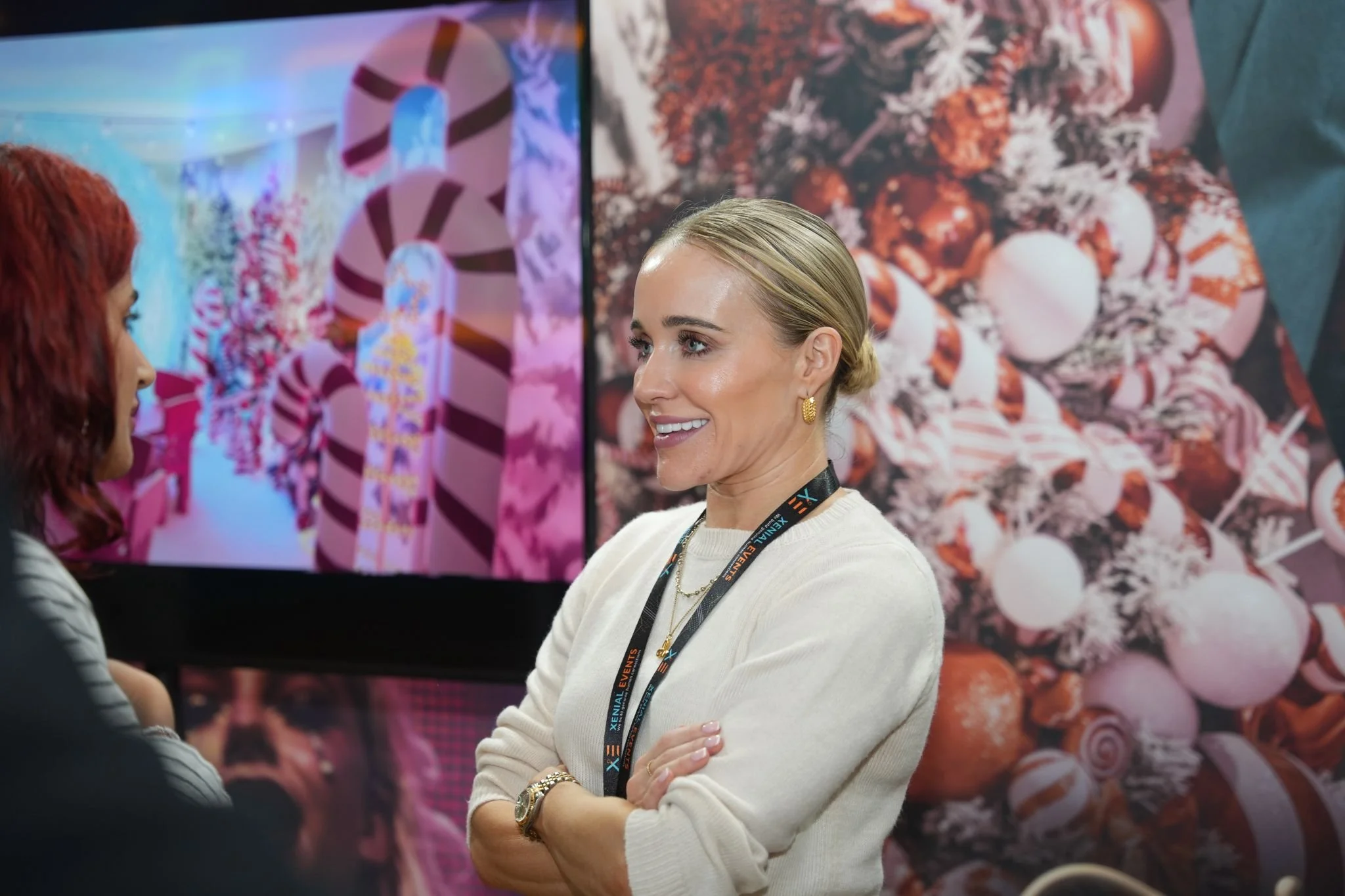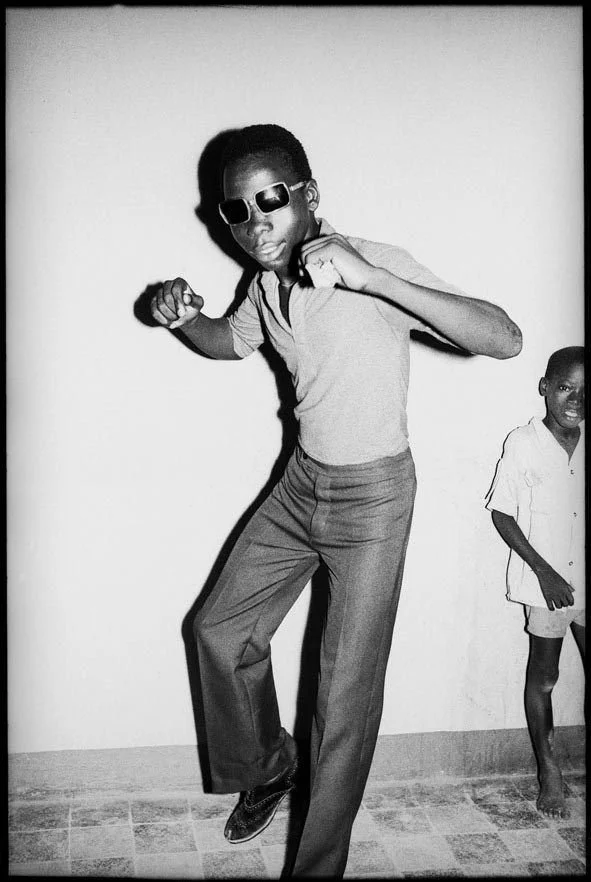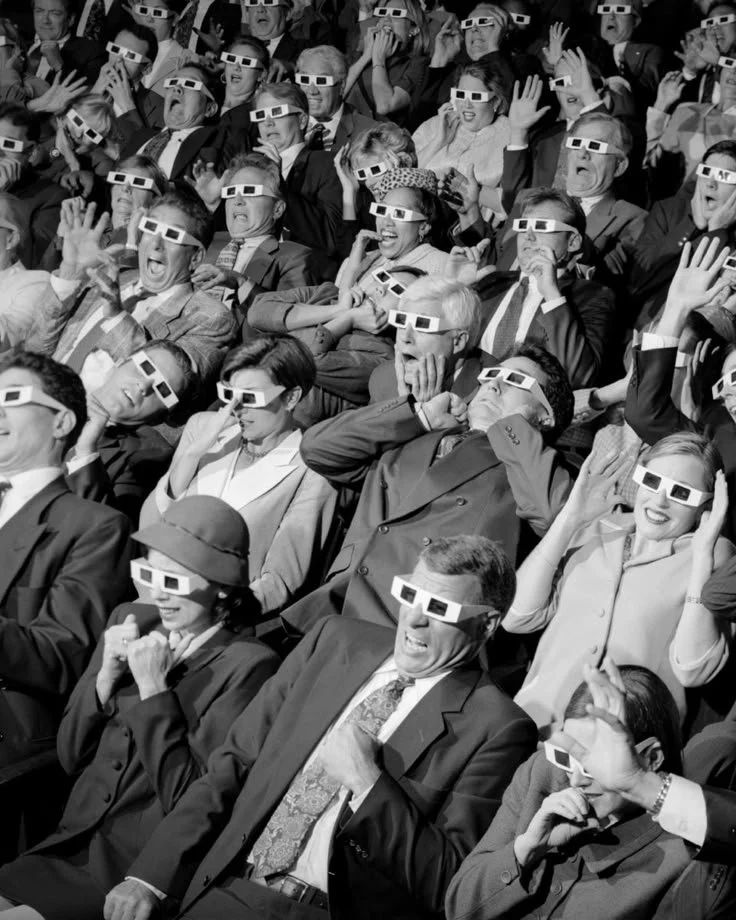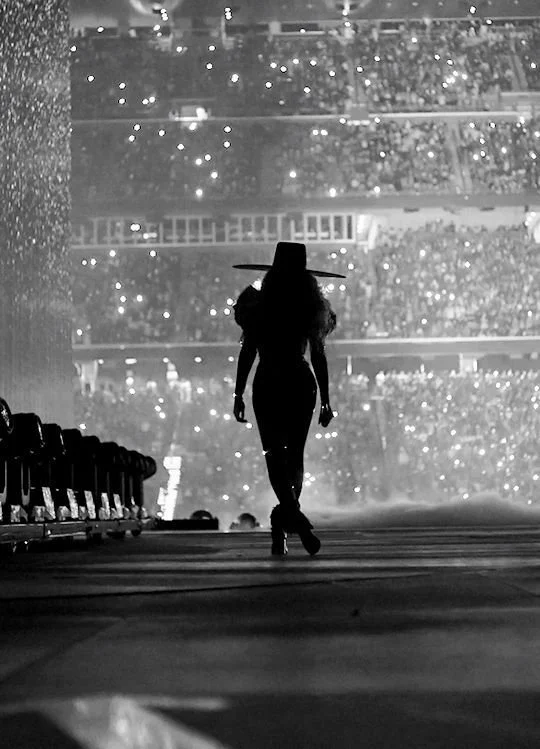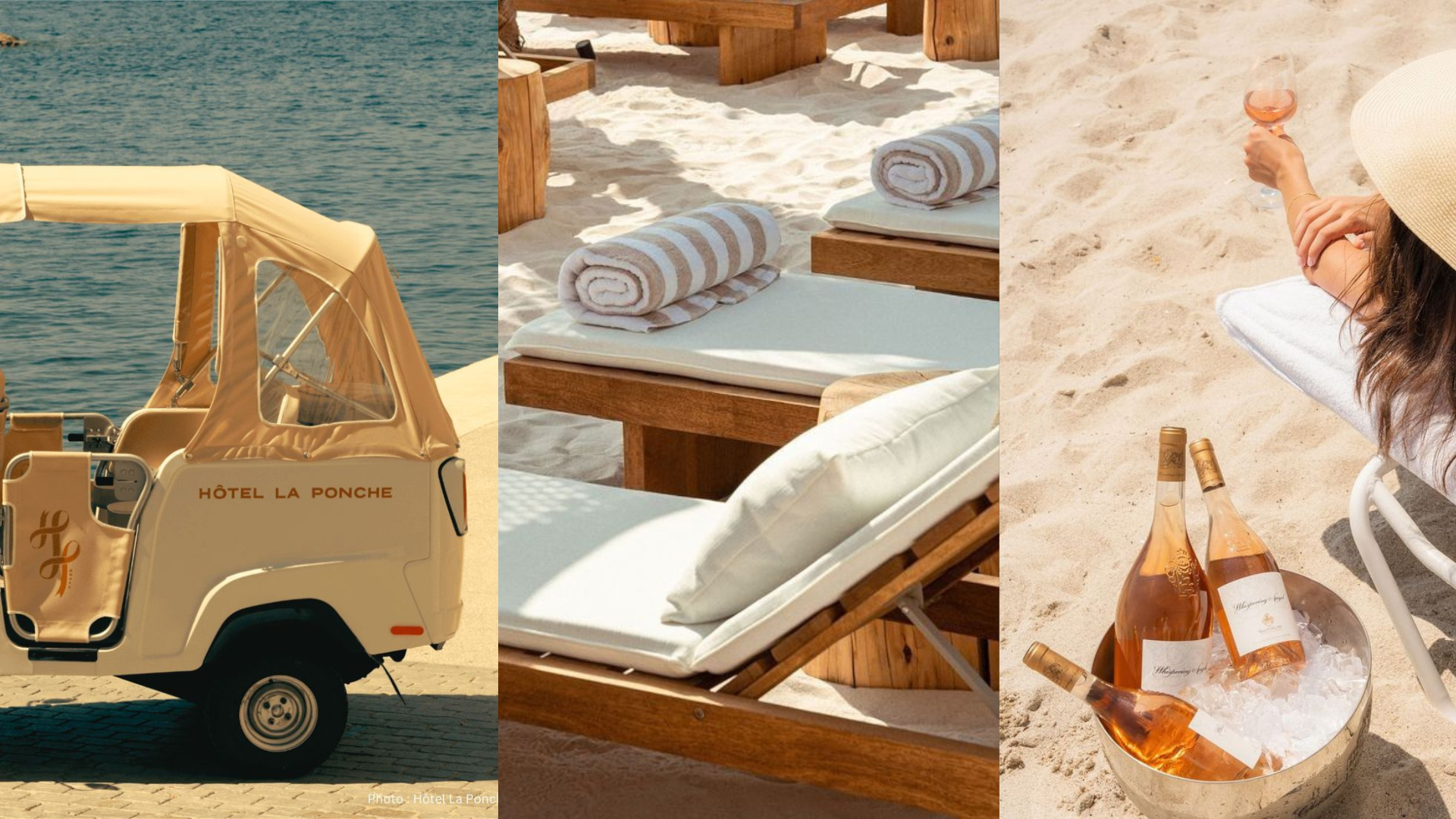
You Made it!
How To Build Your Personal Brand In Live Entertainment So Opportunities Come Your Way Faster Than Rosé Top-Ups At A Saint-Tropez Beach Club In August
The house lights have dimmed.
The show has now begun.
Before you split your lip trying to shove another handful of salty-as-hell popcorn into your mouth, let me grab you real quick to say….
Welcomeeeeeee!
Are you ready to peek behind the curtain at the personal brands of 300+ entertainment execs on LinkedIn?
If you’re reading this, you’re probably interested in building your own personal brand as a live entertainment executive and that fires. me. up.
Look, other industries have already figured this out.
Tech CEOs are building empires one LinkedIn post at a time.
Start-up founders are securing VC deals with their content.
Even fricken accountants are becoming thought leaders.
But entertainment? We're still hiding behind the curtain.
Sure, the live experience is what people buy tickets for. It’s what they remember most. What they rave to their friends about.
But here's what's changing everything:
People don't just buy the experience anymore. They buy from the humans who create it (you know that, I know that).
Talent doesn't just scroll job boards. They stalk the CEOs they want to work for.
Investors don't just read pitch decks. They follow the visionaries whose insights make them think “holy shit, this person gets it”.
And where can all these successful personal brands be found?
LinkedIn of course!
The live entertainment executives who understand this are already winning.
They're getting partnership DMs instead of spammy cold emails. Speaking requests instead of conference crickets. Investment conversations instead of ignored pitches.
The ones who don't?
They're watching from the sidelines wishing the opportunities they’re after would just magically fall from the sky.
Now before we get into…
How To Build Your Personal Brand In Live Entertainment So Opportunities Come Your Way Faster Than Rosé Top-Ups At A Saint-Tropez Beach Club In August
let me tell you why you should take any advice from me at all.
I’ve spent most of my working life in live entertainment - 11 of those years leading VIP and front of house experiences for Cirque du Soleil.
I also ran the entertainment department on a cruise ship (but that’s a story for later).
Now I am the ghostwriter to top entertainment CEOs and executives - building their thought-leadership-based personal brands on LinkedIn and beyond.
Here are a few highlights that made it into the programme:
After 90 days working with one live entertainment exec, he saw a 222.4% increase in impressions, 133.8% increase in engagement and 254% increase in followers. He also got 1 speaking gig request (by a top speaking agency in Canada), 1 async keynote request (by a large event in Europe), 2 top industry podcast interview invites and 1 industry publication request. This kept him busy for a while!
An intro I made for another one of my clients got him a speaking gig at the largest global trade show for business events (his personal brand and weekly content got the deal over the line).
In Q2 2025, I increased another client's LinkedIn impressions by 78.2% (vs Q1).
I led a personal branding workshop for entertainment execs at the 2025 World Experience Organization Summit in London
So whatdoyasay… shall we pop that ice-cold bottle of rosé and feast?
How To Devour This Guide
I’m not here to throw another snoozefest of a report in your face.
I’m sure you look at enough spreadsheets and PDFs all day long.
Instead, I’m here to be the summer breeze to your stuffy inbox.
I have created this guide to be an endless scroll of entertainment and education that will help you build your personal brand no matter where you’re starting from and what your goals are.
Now I may not be able to wow you as much as a Cirque du Soleil show can, but hopefully the one-page, scroll format will allow you to find your flow and sink into each Act.
Just bookmark the URL so you can come back at any time.
Need another espresso first? All good. I’ll wait.
…
…..
…….
……..
Below are hyperlinks to each Act if you’re feeling too jittery to devour this in order (I get it… I’m already 3 espressos in as I write this).
Each Act is short and actionable.
You're brilliant.
You're creative.
You'll know what to do with this.
Are you ready?
Allez.
Real quick... if at any point throughout this epic read you think to yourself “fuck it, I don’t want to do this myself, I want a ghostwriter to help build me an iconic personal brand”, waltz on over here.
Act I
Why Build A Personal Brand At All
Picture this: I'm on tour with Cirque du Soleil, running daily VIP experiences, leading local teams, hosting celebrities and corporate clients, managing crazy logistics (IYKYK), working with world-class performers and changing cities and countries every 2 months…but I have the saddest LinkedIn presence you've ever seen.
This was me throughout my entire entertainment career.
I kick myself thinking about it. I could've been…
connecting with Fortune 500 execs on my guest lists
attracting headhunters with my global industry expertise
helping my corporate alliance team land new clients for our VIP offerings.
Instead, I was invisible for all of it.
If I could go back I’d start building my personal brand SO much earlier.
Now as a ghostwriter who spends almost all of their time building personal brands in our industry, it’s damn obvious.
The live entertainment execs who attract opportunities are the ones positioning themselves as the industry experts they actually are.
They understand that building trust happens both in person AND online.
And by going all in on LinkedIn (the best business platform right now), they’re landing speaking gigs, getting invited on industry podcasts, being asked to contribute to entertainment publications, finding clients and joining boards.
They’re improving their internal company reputation, strengthening their relationships with their employees and attracting top talent to their teams (goodbye lame job boards).
They’re becoming well-known, industry thought leaders.
If you want any of the opportunities I mentioned above, then keep reading.
If you don’t, click outta this now. It’s not for you.
Act II
The Huge Opportunity For Live Entertainment Execs
I spent 30+ hours diving deep into 300+ entertainment executives' LinkedIn profiles to see who’s living the thought-leadership high life vs. who's losing influence by the day.
I looked at execs with titles like SVP, VP, President, CEO, Founder, Director, etc.
I looked at execs from companies like Paramount, Disney, Cirque du Soleil, Moment Factory, Caesars Entertainment, IAAPA, Live Nation, AEG and Universal.
I probably looked at your profile too.
I devoured profiles and content, post by post, like a super fan getting sucked into every room of an epic Meow Wolf experience.
The Results Will Smack You In The Face
92% are invisible.
Now I didn’t have access to these execs’ personal analytics like impressions and engagement, but here's what the public data revealed about their LinkedIn presence:
The data reveals an absolutely massive opportunity for live entertainment execs right now.
Over half (55%) have under 3000 followers. Now I don’t put a lot of weight on follower count because it has been proven time and time again that you can have more influence with 1000 true followers than with 50k followers.
But I see the best results with my clients at around the 5k mark, so that’s a good goal to aim for (if you’re not there yet).
Here's where it gets even more interesting: 76% of entertainment executives are posting so infrequently they're missing huge opportunities to build influence.
And when they DO post?
Most are playing it safe with predictable content.
Look at what entertainment executives are actually sharing: 43% company announcements, 28% event promotions and 15% industry news with zero original insight.
That's 86% posting the same type of content everyone expects.
Meanwhile, only 8% are sharing personal insights (the goldmine most are missing) and just 6% are posting behind-the-scenes content (what audiences actually crave).
You're not just competing in an open market - you're competing in a space where 92% of leaders haven't figured out how to build meaningful digital presence AND most are sticking to safe, predictable content that doesn't stand out.
The doors aren't just open - the entire LinkedIn theatre is empty and waiting for live entertainment execs to take the stage.
We need headliners!
Now for God’s sake, channel Sister Mary Clarence aka Deloris Van Cartier and repeat after me…
I am not now nor have I ever been a Las Vegas showgirl. I….am a headliner!
Now let's see how the legendary 8% figured this out.
Intermission
Your beach club day is in full swing.
Sun-kissed skin.
Salty hair.
You take another dip in the crystal clear sea and on your way back signal the waiter for a rosé top-up.
If you’re having a great time so far… I’d love to invite you back for a VIP exclusive.
If you give me your info below, I’ll send you my weekly-ish emails, Lost Influence.
In a nutshell they are a continuation of this glorious guide - just with more funny stories, cheesy GIFs and strategies gleamed from my client successes (I’m not going to give you advice that I haven’t proven first, am I).
Right. Whatdoyasay?
Act III
How The Top 8% Are Standing Out
After analysing the top 8% who actually get industry attention, here's what they do differently:
1. They Post
Instead Of: Never logging into LinkedIn, treating it like a digital CV or posting sporadically when they remember
They Post: Multiple times per week with consistent, original, strategic content that builds their industry authority over time.
Why This Works: Thought leadership isn't built in a day - it's the compound effect of consistently sharing insights that only you could share. Miss weeks at a time and you start to become invisible.
Here's A Few Perfect Examples: James Wallman, Daniel Lamarre, Duncan Fisher, Anick Beaulieu, Iain Morrison, Vince Kadlubeck, Carolyn E. Howell.
2. They Educate
Instead Of: Only resharing company announcements and industry news with zero personal insight or commentary added
They Post: Industry trends they're seeing, insights from conferences they're attending, predictions about where live entertainment is heading and breakdowns of what's working/not working in the industry.
Why This Works: Anyone can hit repost. But when you consistently share your take on industry developments, you become the go-to voice other executives turn to for insights. Media quote you, conference organisers invite you to speak and peers DM you for your perspective.
Here Are 2 Perfect Examples:
3. They Attract
Instead Of: Posting dry company updates or ‘I’m thrilled to announce’ announcements
They Post: Behind-the-scenes glimpses of their company culture, entertaining stories about what it's really like working together and content that showcases why their company is the place top talent wants to be. They are the ultimate cheerleaders of the companies they run.
Why This Works: The best entertainment professionals don't apply through job boards - they follow and engage with executives they want to work for. You become a talent magnet because people can see the culture, leadership style and opportunities before they even apply.
Here Are 3 Perfect Examples:
4. They Advise
Instead Of: Keeping their hard-won wisdom to themselves or only sharing leadership insights in private conversations
They Post: Career lessons from their journey, leadership insights from managing entertainment teams, practical advice for navigating industry challenges and mentorship content for aspiring entertainment professionals
Why This Works: When entertainment executives share their wisdom publicly, it strengthens their reputation as industry leaders worth following. Their teams feel proud to work for someone the industry respects, top talent seeks them out and they become magnets for speaking and advisory opportunities.
Here Are 2 Perfect Examples:
5. They Inspire
Instead Of: Only posting about current projects or staying focused on the day-to-day operational updates
They Post: Their big-picture vision for the future of live entertainment and the experience economy, what excites them about industry innovations and aspirational content for the next generation of entertainment leaders.
Why This works: Entertainment is ultimately about creating magic and moving people. Executives who share their passion and vision for the industry become the leaders others want to work with and learn from. They attract the best talent, most interesting partnerships and biggest opportunities because people are drawn to their energy and forward-thinking perspective.
Here Are 2 Perfect Examples:
6. They Build Together (BONUS STRATEGY)
When we think of personal branding, we typically think of individuals right? That CEO, that VP, that Founder.
But one way to amplify your company through personal branding is to get your entire executive team onboard. This is easier said than done and I don’t see it often on LinkedIn, but when a team goes at it together, wow, the impact is huge.
Let me introduce you to the executive team of Pop Up Global - Dan Clift, Amy Morris and Laura White.
Photos: Amy Morris, Dan Clift
I've been following these three execs since the pandemic (now they are a team of five) - not just following, but truly watching how they've turned personal branding into an art form.
Here’s how they do it:
They document.
Behind-the-scenes of building Pop Up, the messy middle of growth, new talent blazing in, new partnerships, moving into new territories, leadership lessons.
They've turned building their company into the best damn business documentary I've seen on LinkedIn.
They stand out in my eyes because they do things differently than a lot of execs just reposting company announcements:
• They craft long-form content that holds you captive till the final word
• They write with emotion and genuineness
• They're always hyping everyone up - their performers, their team, each other
• They share real photos from real events with real people, not AI/stock imagery
• They are vulnerable when it comes to their individual leadership journeys - they never claim to know everything
The result is magnetic.
If I was a performer looking for work, Pop Up would be my first choice. They radiate excitement and excellence through every post.
If I was a potential client, I'd already be sold. Their content is their portfolio.
If I was an investor, they'd be on my radar immediately. This team knows how to build, scale and document growth in the industry whilst keeping their souls intact.
They show that when entertainment executives show up with personality-driven content on LinkedIn, it doesn't just build personal brands - it builds business.
If you're an executive team looking to collectively grow your personal brands, they are your masterclass.
Ready to join them? Here's how…
Act IV
How To Build Your Own Personal Brand On LinkedIn
Look, you're convinced personal branding works yes?
You’ve seen your peers leverage the hell out of LinkedIn to get the opportunities they’re chasing like speaking gigs, promotions, board invites and partnership/investor/client deals.
Now it's time to stop being a spectator and find your own stage (in 5 steps).
Step 1: Find Your Unique Angle (No Generic Slop Allowed)
Your goal shouldn’t be to appeal to everyone.
It should be to find your point of differentiation.
The one that’ll make your audience run to your content like Taylor Swift fans bolting to get front row.
Take me as an example.
There are lots of ghostwriters out there who serve all sorts of niches.
But my unique angle is that I actually come from live entertainment.
I’ve been in the trenches.
I’ve loaded trucks at 2am in the pouring rain.
I’ve hosted celebrities in the VIP and led over 60 hospitality teams all over the world.
That’s the kind of differentiator you can’t fake your way to - no matter how many clients you have.
So I lean into this in all my content. It is my unique angle.
Now let’s find yours!
Ask Yourself These 4 Questions:
What type of entertainment experiences do I create/lead? (festivals, venues, corporate events, cruise entertainment, theme parks etc.)
What part of the business do I see that others don't? (artist relations, audience journeys, brand partnership negotiations, operations, C-suite etc.)
What's my contrarian take on the industry? (What does everyone get wrong?)
What stories can only I tell? (Your specific experiences and insights)
Step 2: Turn Your LinkedIn Profile Into Your Main Stage
Your LinkedIn profile is your new golden asset.
So before you even THINK about posting, make sure it reads like a programme on premiere night - iconic, surprising, memorable.
There are 4 main features that are in desperate need of a glow-up:
Banner
Keep this simple - an image or text that best represents you. Could be a pic from the latest live experience your company has launched, a value proposition statement (I help [specific person] with [specific problem] by [specific solution]), you on stage speaking, your company’s logo or slogan.
Don’t overthink this… ok?! Always go back to 'What do I want to be known for?'
Headline
Not only does your headline appear at the top of profile, but it’s also visible when you comment on other people's posts. So it needs to be VERY clear. Here’s mine:
This is the format:
What I do. Who I do it for. What transformation I help them get. My credibility.
Don’t just put your role and company. That’s boring. Expected. Forgettable.
Spice it up.
About Section
If this section reads like a boring CV cover letter, burn that baby to the ground and start over.
You want your potential client, customer, investor, employer or employee to read this section and think... “Holy shit! I NEED to know more about them immediately”.
Write this section in first person (you're not Beyoncé) and tell a fricken great story.
Tell YOUR story - but don’t make it too long - keep it to max 200 words so your audience actually reads the full thing.
Featured Section
Think of this section like a spotlight moment. As someone scrolls down your profile, it’ll jump out, so it should be THE post (max 3) you want to be known for - your best performing post, your company’s website, your keynote announcement or project launch.
Step 3: Collect Your Stories (Faster Than A Groupie Chasing A Tour Bus)
Most live entertainment leaders like you get stuck when it comes to creating content because they don't know what to talk about.
They have SO much knowledge and expertise and their days are chock-a-block, but when it comes time to actually sit down and turn all that into LinkedIn posts, they suffer from one of the most common afflictions amongst execs…
Blank Page Syndrome.
But there is a way to help make this a little less painful.
The Snapshot Method
If I followed you around for the day, I could EASILY write 10-15 unique posts just by capturing all the little moments.
Think about your day today - what are all the things you're doing?
You might be...
Hosting a team huddle
Building out a creative brief
Attending an industry event
Leading a bunch of meetings
Revising next quarter's budget
Checking yesterday's sales reports
Sitting down with an employee for a 1:1
Looking at the latest marketing campaign results.
Hiding in the bathroom because your CFO is hunting you down.
Within each of those activities is content gold (even the last one).
The key to finding that gold is to document in the moment.
At the end of that meeting, take 2 mins.
Open your notes app in your phone.
Write down what happened in a few bullet points.
Team win
Something that surprised you
Interesting question your colleague asked
Problem you just haven't been able to solve yet.
It's all about capturing ideas, thoughts, struggles and interactions IN THE MOMENT.
So when you're sitting there staring at a blank LinkedIn post thinking to yourself “what the hell am I going to write about?”, you can open your notes app and effortlessly pick from your banging new list of ideas.
Here’s An Example Of This In Action (I Practise What I Preach):
I was on a call with a potential client. He was ready to start working together, but he wanted his company to pay for it.
So he asked me what the company ROI of him working with a Ghostwriter to grow his personal brand was.
I put together a one-pager, he shared it internally and the company covered the cost. BAM.
I opened my notes app. Made a note of this cost hurdle for potential new clients. Turned it into this LinkedIn post.
Step 4: How to Write Posts That Don't Suck
You got into live entertainment because you loved creating experiences that give people chills, not because you wanted to write boring posts about finding synergies or working in fast-paced environments. Am I right?
So let’s make sure your content doesn’t let you down.
Every week another LinkedIn guru shares a new post structure, methodology or AI writing tool.
What ends up happening?
Everyone’s posts start to look the same (you may have already noticed).
I used to follow them too.
And my posts turned into robotic garbage.
So I 86’d that pretty quick.
Now I have a few rules I follow instead (to make sure my posts don’t suck).
1. Write Like You Speak
It is a common misconception that to attract people you need to sound smart. But in most cases, this is a total turn-off because your reader just ends up confused. Instead your goal should be to sound relatable.
Does your post sound like you’re telling your friend a juicy story over coffee? BAM. Nailed it.
2. Forget What School Taught U About Grammar
Want to start a sentence with And? Do it!
Want to say shit without replacing the i with a * ? Do it!
Want to use weird spelling to make a word stand out? Do it!
Made a few mistakes here and there? Who cares!
Just be YOU!
3. Space Out Your Text
We are talking about social media here, not some university assignment. If your paragraphs are chunkier than a Ben and Jerry's Chunky Monkey ice cream, you gotta reformat them.
Who wants to read big fat paragraphs? Um. Nobody. Duh!
4. Spend 70% Of Your Writing Time On Your Hook
The hook of a post is what your reader sees before they have to click '...more'.
If it sucks, they'll keep scrolling and your precious words will be lost forever. It's the most important part of your posts. Capeesh?
I spend more time on those first 220 characters than most execs spend on entire presentations, it's unhinged. It's also why they end up working. (If only I could show you a few of my clients' posts!)
5. Add A Visual Asset To Your Post
If you want your post to live its best life and have a fighting chance at being picked up by the almighty algorithm, add a visual asset - pic, carousel, text image, video or gif.
The easiest is a photo. And not a stock image FOR THE LOVE OF GOD! They are the LinkedIn equivalent of mind-numbing elevator music. Don't do it.
A picture you took (or someone took for you) that complements the post.
I’m constantly pestering my clients to take more pics. Why? Because it helps tell their stories.
=
Pssst... even with these tips, writing attention-grabbing posts can be tough (and takes lots of practice). So if you need some help, Just say the word.
=
Step 5: Stop Being A LinkedIn Wallflower And Commit To The Damn Thing
Right now you’ve got everything you need to absolutely dominate LinkedIn.
You've got your unique angle locked down.
Your profile is about to be more magnetic than a backstage pass at Coachella.
You know how to spot and capture content gold in your daily chaos.
You've got the posting playbook that'll make your content readable and relatable.
But…
All of this is absolutely fricken useless if you don't actually show up.
You can't build a personal brand by lurking in the LinkedIn shadows like some wallflower.
So right here, right now, make a promise to yourself:
How many posts per week will you commit to?
1 post? That's playing it safe, but it's infinitely better than zero.
3 posts? Now we're talking - this is where the magic starts happening.
7 posts? You absolute maniac, I love the energy.
Pick your number. Write it down. Even set a reminder on your phone (this is what I do).
Because the entertainment executives getting speaking gigs, partnership DMs and headhunter calls aren't the most talented ones.
They're the ones who showed up consistently when everyone else was silent.
So you've committed to showing up on LinkedIn - now let's talk about becoming absolutely unforgettable.
Act V
Beyond LinkedIn - Be Iconic
LinkedIn is just the beginning.
The moment you start building your personal brand over there, something bigger starts to happen.
You're not just posting content anymore - you're positioning yourself as the entertainment executive other industry leaders (seasoned and upcoming) can't ignore.
But here's the thing about being iconic: it doesn't happen overnight.
And it sure as hell doesn't happen by accident.
What Does ‘Iconic’ Actually Mean?
Look, I'm not talking about becoming a celebrity or influencer.
That's not the goal here.
Iconic means being the person other entertainment executives think of when they need advice or specific expertise.
When a journalist needs a quote about venue partnerships, they call you.
When a conference needs a speaker on leadership in events, they invite you.
When an investor is looking at entertainment companies, they ask for your take input.
The top 8% of entertainment executives who currently dominate LinkedIn understand that every post is an opportunity to:
Demonstrate industry expertise through authentic insights
Build trust by sharing both successes and failures
Create partnership opportunities by showcasing thought leadership
Establish authority that leads to speaking gigs, media mentions and business development.
Iconic means your opinion matters.
Your insights move conversations.
Your presence elevates any room you're in.
How You Know You're Making Progress
Forget obsessing over follower counts and likes on each post. You’ll drive yourself crazy (and won’t last long).
If you want to build an iconic personal brand in live entertainment you’ve got to play the long game.
For context: My clients often see meaningful results at around months 3-5 of us working together.
Here are the signals we actually pay attention to:
Your Team Notices - Employees feel proud to work for someone the industry respects. They talk about your posts constantly. They engage with you more. Up-and-coming leaders are dying to be mentored by you.
Speaking Opportunities - whether it’s keynotes, panels or podcasts, you’ll start getting inbound requests specifically referencing your content.
Talent Finds You - Top talent seeks you out. Recruiting becomes easier. No more posting to stuffy job boards.
Partnership Conversations Find You - Your industry peers reach out to collaborate. Investment opportunities come through your network. Business development happens in your DMs.
The Industry Seeks Out Your Perspective - Other executives ask for your take on industry trends. You become part of conversations that shape the future of live entertainment.
Your Iconic Moment
See that silhouette in the spotlight? That's you.
Not because you chased fame or attention.
But because you consistently showed up, shared your expertise, built authentic relationships and positioned yourself as the entertainment leader others want to learn from.
Your industry trusts you.
The stage is set.
The audience is waiting.
Time to be iconic.
Encore
Alright That’s The End Of The Show!
Thanks for sticking with me to the very end.
Seriously.
I know you're busy leading your company, so the fact that you took time to read this means everything.
People ask me why I chose to niche-down to live entertainment executives instead of casting a wider net.
Here's the truth: after 20 years in this industry, I know firsthand how many incredible humans create magic every single day.
But most are invisible online and that hurts my heart.
You deserve to be known for the sheer creative genius you are.
You deserve promotions and speaking gigs and industry recognition.
If you apply what you've learned in this guide and lean into those stories only you can tell, you start to see success.
Remember: Your industry is built on creating unforgettable experiences.
Your LinkedIn presence should do the same - turn every piece of content into a VIP experience that makes other live entertainment executives feel like they're getting exclusive backstage access to your insights.
But hey… if you're like the entertainment execs I work with who barely have time to write a single sentence let alone build out an entire thought-leadership personal branding strategy, I’d love to be your ghostwriter. Head here.
Either way, the spotlight is waiting.
Time to step onto your stage.


